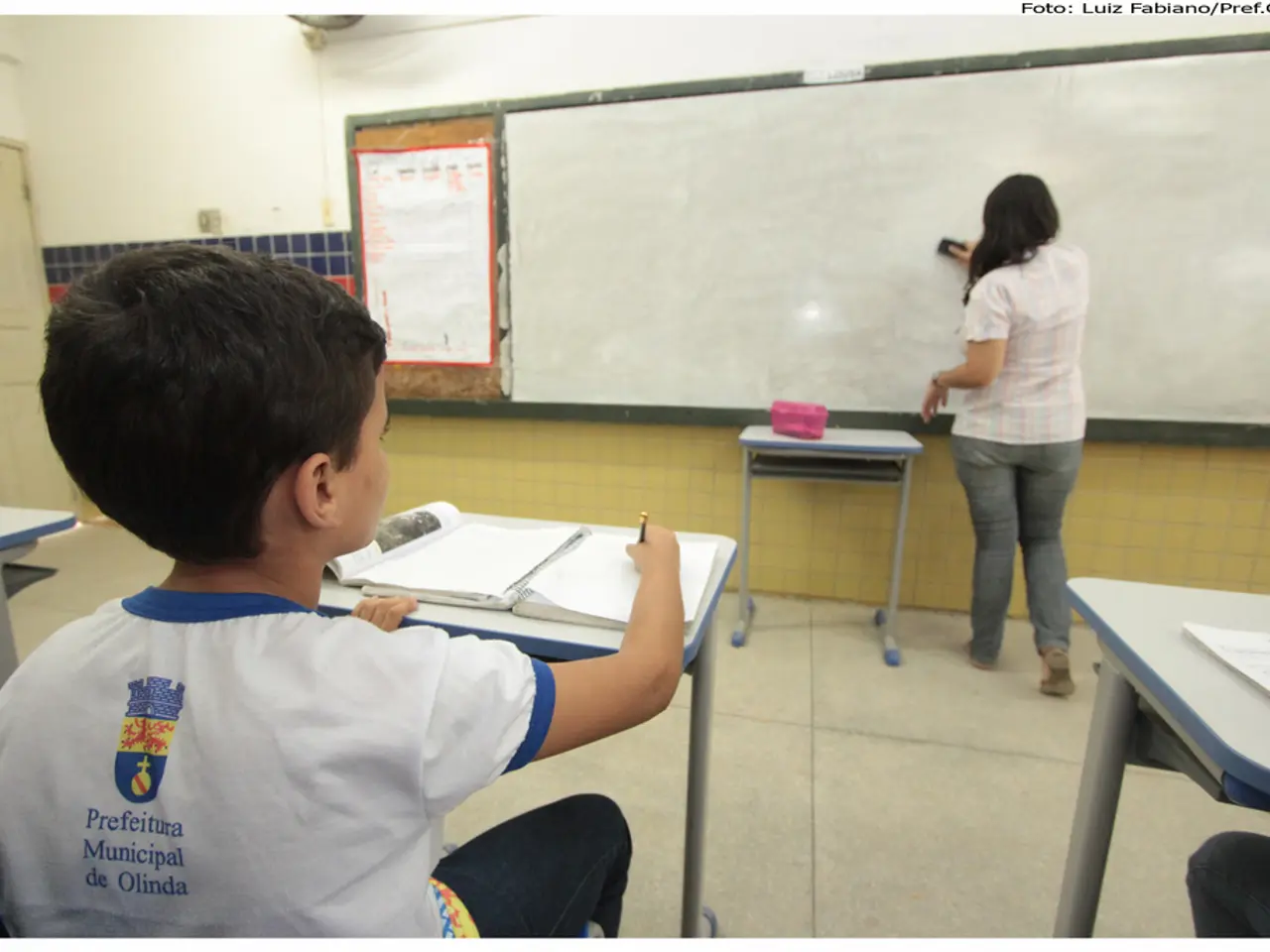Math instruction at an elementary school in Wisconsin underwent a modification, resulting in a boost in test scores.
In the rural town of Wisconsin, Winskill Elementary School has made a remarkable turnaround in its math proficiency rates. Once struggling with below 40% of students meeting expectations, the school has now nearly doubled its success, with nearly 80% of students either advanced or meeting expectations in math.
The secret to Winskill's success lies in a shift in teaching approach, focusing on the 'why' behind mathematics and practical examples to help students understand the subject better. Principal Brad Sturmer, who arrived at the school nearly a decade ago, has been instrumental in leading this change.
Missy Sperle, a fifth-grade teacher at Winskill, is a master at her craft. She was even one of the six Wisconsin finalists for the Presidential Awards for Excellence in Mathematics and Science Teaching last year. In her class, collaboration and getting kids moving are ways to engage them with math.
Instead of sitting in rows and working on math worksheets, students at Winskill gather around whiteboards for group work. On a Tuesday morning, Missy presented her students with a math problem involving a budget, focusing on decimals, which the students had been working on.
Missy felt she was failing her students a decade ago with her teaching methods. But now, she believes that the approach taken at Winskill—which may take longer—has led to a deeper understanding of math among her students.
The research indicates that students who struggle at mathematics after third grade are likely to struggle for the long haul. However, the transformation at Winskill suggests that with the right approach, even struggling students can catch up and excel in math.
Brad Sturmer believes this approach could work anywhere. He emphasises that teachers at Winskill no longer teach math in the same way they were taught a decade ago. Instead, they focus on practical examples, like cutting up a pizza to understand fractions or using a budget to understand decimals.
The National Assessment of Educational Progress found that 39% of fourth graders in the U.S. are proficient in math. While Winskill's success may not be replicable in every school, it serves as a shining example of what can be achieved with a commitment to student learning outcomes and a willingness to adapt teaching methods.
Sources:
[1] WPR. (2019, September 27). Winskill Elementary School in rural Wisconsin improves math proficiency rates. Retrieved from https://www.wpr.org/winskill-elementary-school-rural-wisconsin-improves-math-proficiency-rates
[2] WQOW. (2019, October 1). Winskill Elementary School improves math proficiency rates. Retrieved from https://www.wqow.com/content/news/Winskill-Elementary-School-improves-math-proficiency-rates-571102761.html




